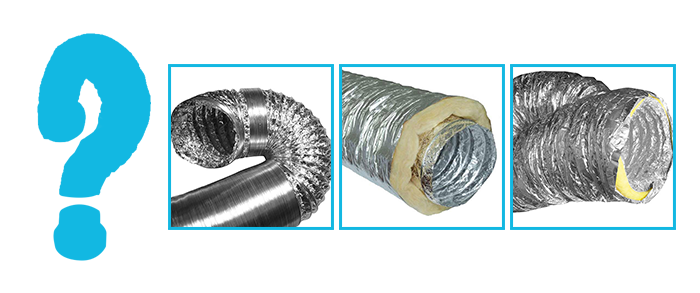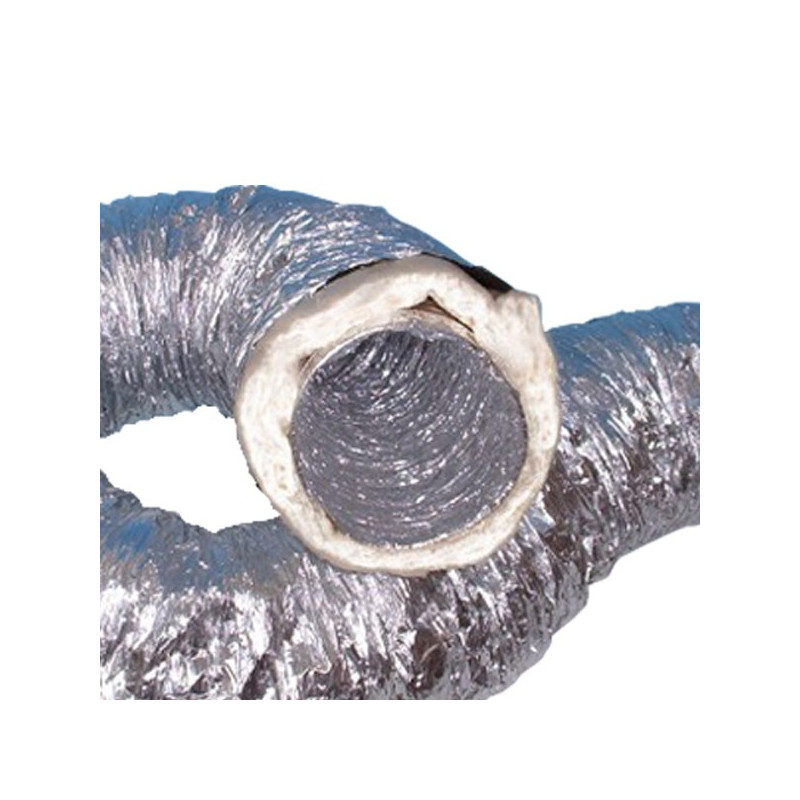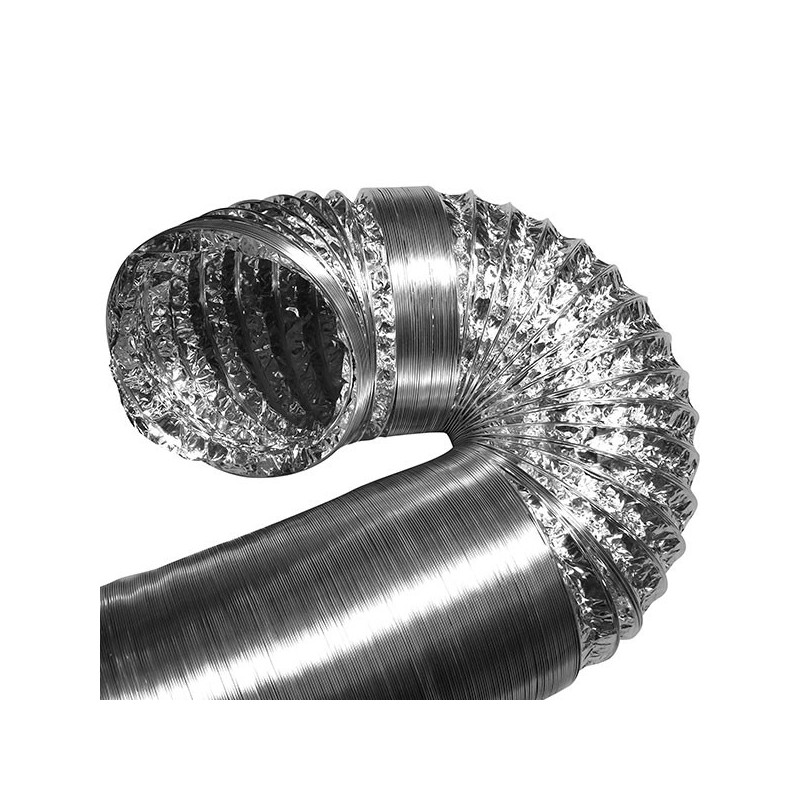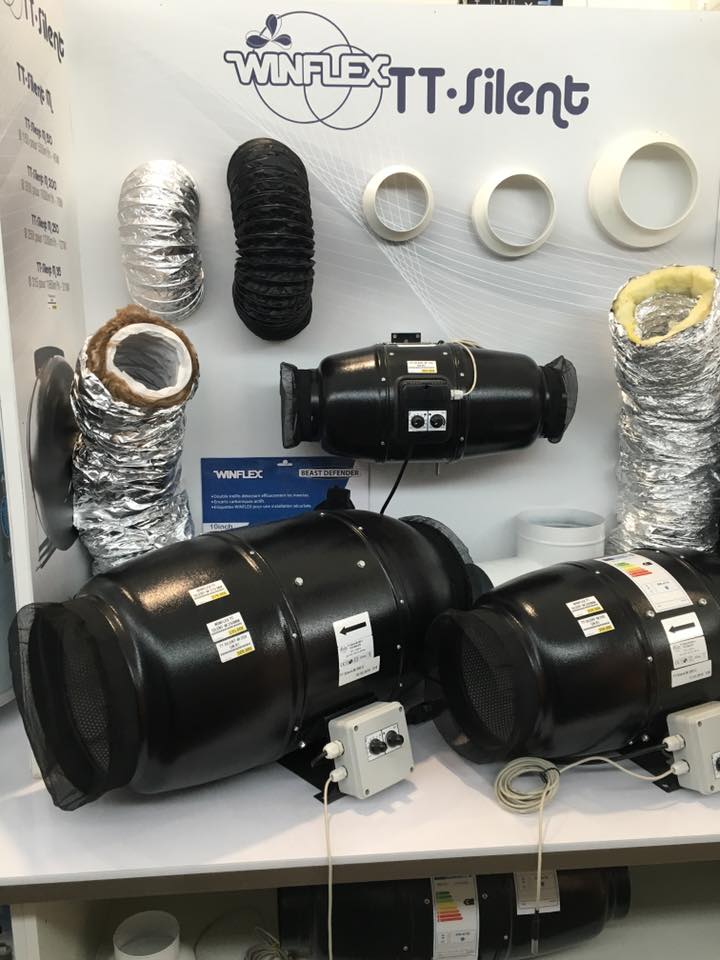Need a hose on ventilation ducts?
Air distribution ducts or ventilation ducts or pipes are ducts used to circulate air from point A to point B.
A ventilation duct allows air to circulate and be exhausted to the outside. Discover the advantages of flexible or semi-rigid ventilation ducts at Culture Indoor, the leading manufacturer of ventilation ducts in France and Europe.
The ventilation ducts are essential for the installation ofextractors or air aerators for the bathrooms, the VMC of the house or the offices, specific air conditioning ducts, in general we use ducts in wadding.
Discover the different types of ducts and their technical specificities.

types of ducts and ventilation ducts
Here are the different types of ducts or ventilation ducts:
- Galvanized steel ducts,
- Flexible aluminum ducting,
- Semi-rigid aluminum ducting,
- Duct or conduit made of flexible synthetic material such as pvc or double layer aluminum, pvc,
- Flexible ventilation ducts or ducts of wadding or glass wool,
- Ducts or ducts of flexible phonic ventilation or wadding or glass wool,
The cylindrical ventilation ducts are called ventilation ducts.
Flexible ventilation ducts are lighter and more economical.
Flexible ducts are quick and easy to install.
Flexible ducts lend themselves perfectly to changes of direction in plan and elevation, perfect for creating curves or waves, passing over and under, passing obstacles in false ceilings easily and conveniently.
The sealing of ventilation hoses is very good, especially if the connections between ducts are made with sealing joints, use for example the connection sleeves to obtain a perfect seal between the duct connections or ducts.
Round flexible duct sealing adhesive. Discover our different models of aluminum tape allowing a perfect sealing of the ventilation ducts at lower costs
Insulated ducts and their advantages
The insulation of the duct is directly integrated.
Flexible or semi-rigid ducts
Flexible ducts are not recommended because of the high pressure losses compared to rigid ducts, but they are more often used because of their simplicity of installation and their reduced cost.
Advantages of flexible ducts and ducts for ventilation
They are useful for difficult connections at the level of vents or other devices.
Vibration and noise due to air movement are more easily absorbed, making them an interesting choice for achieving higher acoustic performance.
Flexible ducts have a higher pressure drop than rigid or semi-rigid ducts.
Because of the material used, this type of duct is generally fragile which does not facilitate its cleaning.
If the inside of the duct is not smooth, the fouling will be more important.
The shape of the bends, changes in direction, cross-section or branches play an important role in the different pressure losses possible in the distribution network. You can find 30°, 45°, 60°, 90° elbows, T-joints, Y-joints, couplings, clamps, flanges, wall connections, etc. in our product range
Thermal insulation with thermally insulated sheathing

In the case of a ventilation in a cupboard for example, it is useful to insulate the ventilation ducts located between the ventilation unit and the outside, whether the ventilation duct is located inside or outside the protected volume. This is to limit heat loss, and therefore ensure maximum recovery, and the risk of condensation that will avoid micro droplets everywhere inside, condensation must be controlled.
To limit heat loss when the ventilation duct of hot air or cold air, there are ventilation ducts or ventilation ducts insulated thermally as the phonic duct.
In the case of thermal ventilation ducts, the joints must be sealed with tape adhesive.
The ducts are generally composed of mineral wool panels, rock wool, discover Winflex Ventilation and its thermal sheath with natural wool that does not scratch, no more itchy wools during and after your installations in ceilings or attics for example.
Insulation (thickness 25 mm) for duct covered with an aluminum sheet.
Ventilation duct with sound insulation.
A ventilation system is a source of noise with sometimes important noise nuisances. Noise pollution is mainly due to the operation of the fan and the movement of the air in the ducts, so what you hear is the wind in the ventilation duct directly and this is the loudest.
In order to avoid the noise nuisance of your ventilation ducts and to limit the sound there are various possible solutions to solve your noise problem:
- Acoustically insulating the ducts reduces the radiation of noise in the rooms.
- Using anti-vibration supports for the ventilation unit limits the propagation of structural noise. Discover this option on the SOFTBOX soundproofed boxes including an extractor suspended on rubber springs allowing a perfect isolation of the vibrations of the air extractor motor.
The design of an obstacle-free air distribution network:
- Reduces turbulence and therefore sources of noise pollution,
- Limit and vary the air velocity in the ventilation ducts,
- Place the ventilation air extractor in a place far from the living or working rooms,
- Airtightness in the ventilation ducts: The ductwork must be airtight to limit air leakage as much as possible in order to guarantee the defined air flow rates,
- Avoid additional sources of noise pollution,
- Protect against additional clogging or condensation in your ventilation ducts,
Discover the flexible ducts like the aluminum ducts

Discover their advantages:
- Easy to install.
- Small size of the packaged product.
- Fire resistance classification M0 or M1 according to model.
Technical characteristics:
- Fire classification: M0 (incombustible).
- Temperature resistance: -30°C to +250°C (peak)
- Maximum pressure: 2500 Pa.
- Maximum air speed: 30 m/sec.
- Standard length 3m/10 m.
- Available diameters: 82mm, 102mm, 127mm, 152mm, 160mm, 204mm, 254mm, 315mm, 356mm, 406mm, 457mm
Flexible Conduit
Sound insulated aluminum duct

Technical characteristics and advantages:
Easy to install. Sound attenuation and thermal insulation within theduct and ventilation network.
Reduction of condensation and heat loss in ventilation and air conditioning systems at low, medium and high pressure.
The flexible sound insulated duct B M0/M1 is used for the connection of air vents to the main network in ventilation, air conditioning and warm air distribution systems. It contributes to the acoustic attenuation within the network.
Flexible conduits
technical characteristics and advantages :
Easy to install. Sound attenuation and thermal insulation within theduct and ventilation network.
Reduction of condensation and heat loss in low, medium and high pressure ventilation and air conditioning systems.
Low product dimensions when the ducts are packaged in cardboard boxes, which are conveniently compressed for transport and sold in 3m or 10m long cardboard boxes.
Technical characteristics :
- Fire classification: M0/M1.
- Temperature resistance :
- Inner sheath: -30°C to +250°C
- Outer sheath: -30°C to +140°C
- Glass wool density: 16 kg/m3
- Minimum bending radius : 0,54 x Ø + glass wool thickness.
- Maximum pressure : 3000 Pa.
- Maximum air speed : 30 m/sec.
- Standard length : 10 m.
Available diameters :
- Ø82mm
- Ø100mm
- Ø125mm
- Ø160mm
- Ø200mm
- Ø250mm
- Ø315mm
Flexible Duct M0/M1 Sound Insulated Aluminum Conduit
The M0/M1 sound insulated flexible duct consists of an inner wall made of micro perforated aluminium complex M0 thickness in microns, an insulator made of glass wool M0 thickness 25 mm and a vapour barrier made of external aluminium complex M1 thickness 45 microns. It is delivered in 10 meters length compacted in an individual box.
Application of the phonic ventilation ducts:
The flexible duct insulated phonic B M0/M1 is used for the connection of the mouths to the main network within the framework of installations of systems of ventilation, VMC and for the assembly of two lengths, to use a male-male connection, galva or aluminium or PVC.
Push back a few centimeters of glass wool then realize the sealing thanks to aluminium adhesive tape completed by a clamp or stainless steel notched band. The waterproofing must be carried out with the vapour barrier.
At Culture Indoor the leader in ventilation ducts, you are looking for flexible ventilation ducts? Aluminum ducting, combi ducting, duct reducers? Soundproof ducting? Soundproof duct or wadded duct ? Discover our range of ducting and ventilation ducts, in many dimensions such as 82mm ? 100mm, 127mm, 152mm, 163mm, 204mm, 254mm, 315mm etc..
M1 certified aluminum ducts for construction, M0 double layer ducts, M1/M0 soundproof ducts or thermal ducts for a better insulation of your ventilation ducts.


